Today is the birthday of Colette who said
“Sit down and put down everything that comes into your head and then you’re a writer. But an author is one who can judge his own stuff’s worth, without pity, and destroy most of it.”
Wake Up
Today is the birthday of Colette who said
“Sit down and put down everything that comes into your head and then you’re a writer. But an author is one who can judge his own stuff’s worth, without pity, and destroy most of it.”
Today’s New York Times reports that after the Asian nation’s leader, Kim Jong-un, announced that preparations for testing an intercontinental ballistic missile were in their “final stage,” President-elect Donald J. Trump responded on Twitter, writing: “It won’t happen!”
What right does he have to say things that might provoke and enrage a world leader and incite that world leader with nuclear capabilities to use weapons of mass destruction? HE HAS NO RIGHT.
Aren’t his actions grounds for stifling him in any way we can? Grounds for taking away his presidential elect status?
Aren’t his bullying actions of a childish nature and not something of the nature we want in our White House?
To celebrate American Archive Month in October, NASA’s Chandra X-ray Observatory has released a collection of images, including this shot of a cluster of stars 20,000 light years from Earth. The blue and green shows cosmic haze where clouds form; x-rays are shown in purple.

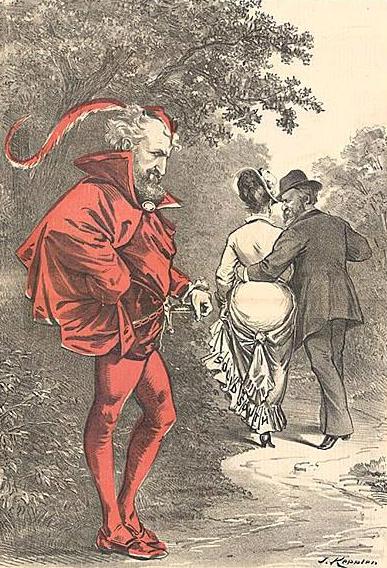
“… The compromise involved Democrats who controlled the House of Representatives allowing the decision of the Electoral Commission to take effect. The outgoing president, Republican Ulysses S. Grant, removed the soldiers from Florida. As president, Hayes removed the remaining troops from South Carolina and Louisiana. As soon as the troops left, many white Republicans also left, and the “Redeemer” Democrats took control. They already dominated most other state governments in the South. What was exactly agreed is somewhat contested as the documentation is scanty.
“Black Republicans felt betrayed as they lost power and were subject to discrimination and harassment to suppress their voting. At the turn of the 20th century, most black people were effectively disenfranchised by state legislatures in every southern state, despite being a majority in some.”
From Clarence Darrow’s The Story of My Life:
“Neither government nor political economy is an exact science. They concern the arrangement of human units. If it were possible to demonstrate what sort of an arrangement would be best for the individuals of the state, it would be of no avail. Humans cannot be controlled like inanimate objects, or even like the lower animals. Each human unit is in some regard an independent entity with his own ideas, his hopes and fears, loves and hates. These attitudes are constantly changing from day to day, and year to year. They are played upon by shrewd men, by influential newspapers, by all sorts of schemes and devices which make human government only trial and success, and trial and failure. Human organizations are simply collections of individuals always in motion and always seeking for easier and more harmonious adjustment, and never static …
This is a changing world, and still it must maintain a certain amount of consistency and stability or the individual units would separate, and chaos would make any co-operation impossible. “
For more information, visit The Compromise of 1877, or the Tilden/Hayes Compromise

Antonio Guterres took the reins of the United Nations on New Year’s Day, making it clear that his top priority will be preventing crises and promoting peace, Edith M. Lederer of The Associated Press reports.
“As Guterres begins his five-year term facing conflicts from Syria and Yemen to South Sudan and Libya and global crises from terrorism to climate change, U.S. support for the United Nations remains a question mark.”
This is something that enrages me more than anything else. When The AP equates what Donald Trump says with what America thinks!!! No, the U.S. does NOT think the U.N. is a place where people get together and talk. Continue reading “Does the ‘U.S.’ question the worth of the U.N. because Donald Trump says something stupid? Donald Trump is not my spokesperson. What Trump says does not equate with what America thinks.”
Sunday, January 1, 2017
“To be truly radical is to make hope possible rather than despair convincing.”
~ Pamela Haines, Philadelphia Quaker
I get these great inspirational emails from paceebene.org. Check them out. They’re good for a lot more than inspirational quotes, too.
Feb. 27 is the birthday of writer John Steinbeck, whose great novel of the 1930s, The Grapes of Wrath, gives an eloquent and sympathetic voice to the dispossessed. In 1962, Steinbeck was awarded the Nobel Prize in Literature “for his realistic and imaginative writings, combining as they do sympathetic humour and keen social perception.” You can watch him deliver his Nobel speech above.
And for insights into how Steinbeck reached that pinnacle, you can read a collection of his observations on the art of fiction from the Fall, 1975 edition of The Paris Review, including six writing tips jotted down in a letter to a friend the same year he won the Nobel Prize. “The following,” Steinbeck writes, “are some of the things I have had to do to keep from going nuts.”
For the entire list of tips and more, visit: John Steinbeck’s Six Tips for the Aspiring Writer and His Nobel Prize Speech | Open Culture
And more tips here:
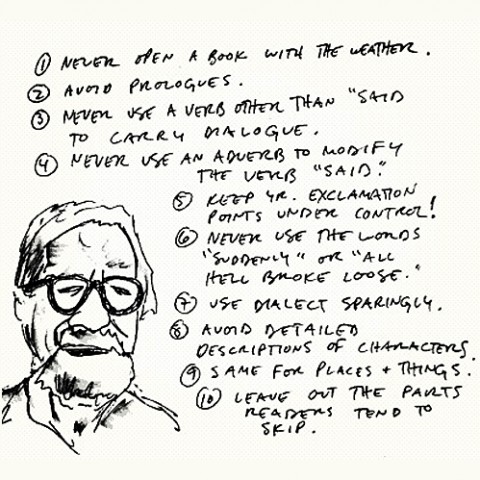 Here’s one way to become a better writer. Listen to the advice of writers who earn their daily bread with their pens. During the past week, lists of writing commandments by Henry Miller, Elmore Leonard (above) and William Safire have buzzed around Twitter. (Find our Twitter stream here.) So we decided to collect them and add tips from a few other veterans — namely, George Orwell, Margaret Atwood, and Neil Gaiman.
Here’s one way to become a better writer. Listen to the advice of writers who earn their daily bread with their pens. During the past week, lists of writing commandments by Henry Miller, Elmore Leonard (above) and William Safire have buzzed around Twitter. (Find our Twitter stream here.) So we decided to collect them and add tips from a few other veterans — namely, George Orwell, Margaret Atwood, and Neil Gaiman.
And one tip from me: Don’t get too hung up on tips but write if that is what you want to do. Just write. Your style will develop. Your words will come out. Your story will come out. Try various things. Start at the end. Or start at the beginning. Try outlining if you’re comfortable with it. Or not. Do what comes naturally. If you like what you do, then you’ll find yourself trying to do more. If you don’t like what you do, then read a book and try it again when you feel you’re ready.
Keen photographers have the ability to elevate the ordinary into stunning imagery and photographer Loes Heerink has done just that with her series about the street vendors of Hanoi. Waking up at 4 am, the vendors—often female migrant workers—pack their bicycles to the brim with fresh flowers and fruit, walking miles throughout the course of the day to peddle their wares.

Heerink lived in Vietnam for many years and became fascinated with these street vendors, so much so that she sought to capture their beauty in a unique way.
For more on this story and to see the photographs, visit http://www.mymodernmet.com/profiles/blogs/loes-heerink-street-vendors-hanoi
Reality Check: So the New York Times, one of the oldest newspapers in the world, is telling its readers that “Mr. Trump promised to dismantle parts of the government and certain legislation if elected.” They’re creating a list of things Trump said during his campaign and feeding it to their readers to ponder. Seriously? Why? Do they not know that EVERYONE LIES TO GET ELECTED??? Why are they feeding us a list of lies to ponder? Why are they wasting their time and ours on this Bullsh#$%???? So we can hold him accountable? Please.
By James McAuley, September 27, 2016

PARIS — Shakespeare and Company, the small, crumbling bookshop on Paris’s Left Bank, may be the most famous bookstore in the world.
It was the first place to publish the entirety of James Joyce’s “Ulysses” when no one else would, and for decades it has been an informal living room — and sometimes a bedroom — for many of the most revered figures in modern literature: Ernest Hemingway and F. Scott Fitzgerald, Jack Kerouac and Allen Ginsberg, Lawrence Durrell and Anaïs Nin.
This week, the staff of the multicolored storefront at 37 Rue de la Bucherie released a comprehensive history of the shop that originally opened at another location in 1919. The book was years in the making, nearly 400 pages of text, testimonies and photographs from the store’s sprawling archive, crammed in mismatched boxes in a closet three floors up an uneven staircase. Conceived as a “memoir” instead of a history, the project is essentially a rigorous attempt to explain what, exactly, Shakespeare and Company is.
Read the whole story and watch a video here: Shakespeare and Company, Paris’s famous bookstore where wandering writers are welcome – The Washington Post
Isn’t one of the government’s responsibilities to keep their people safe? It’s ironic I think that we seem to be so often at odds with the very powers that are supposed to keep us safe, fighting their actions that jeopardize the peace we work so hard to maintain.

From a spark to a flame.
Was it a spark that caused all this?
The Sun? The suns beyond our own?
Or two sticks being rubbed together
By two gods somewhere out there, or two worshipers —
Beyond our solar system, beyond our galaxy,
Beyond what we call the universe — somewhere
some say it was but a particle, a “God particle” —
“A particle?” you ask? Yes and it’s in a 17-mile long
subterranean vacuum tube somewhere in Switzerland.
If there were a god, I’d like him to be Swiss, carrying
a knife with a toothpick and tweezers.
I read ““Writing Without Teachers,” by Peter Elbow in college. One of the things he talks about is how a daily freewriting exercise can free the writer’s mind to write better. It involved writing for at least ten minutes and not stopping even to think of the next word you’re going to write. Not thinking of ideas. Not starting in one place and not going to another. So, I tried to get back into the practice, which I used to do regularly, today. Here is the result. Hope you enjoy.
Freewriting. Writing freely. Writing about freedom. Writing to free the thoughts and ideas that sit untapped, stored in a can of sardines on a pallet on a ship in the harbor, a ship with a name of mostly consonants, painted thickly with a reddish pink or pinkish red sea faring paint and stacked with a seemingly infinite variety of colored shipping containers that, once removed, once unpacked, are placed neatly on trucks and indeed become the containers on the trucks – MAERSK and other names that make me, even an adult, curious as to what they contain, where they come from, China probably, where they’re going, various Walmarts or Michael’s probably, how much they’re worth and if we really need them as if they are but another example of the freedom we hold so dear, the same freedom that holds so many others captive and economically enslaved so that we can enjoy our toilet bowl scrubbers, our Christmas ornaments, our multi-colored ink pens and infinite notepad designs like this one made “sustainably” from the waste of the sugar cane manufacturing process, made for and by Staples stores, but still, behind the sugar industry in Florida where maybe some of that material originates, is a political corruption that spoils millions of acres in exchange for hundreds of millions of dollars that’s reported on in the Miami Herald but continues despite the corruption that holds migrant families hostage in the Land of the Free.
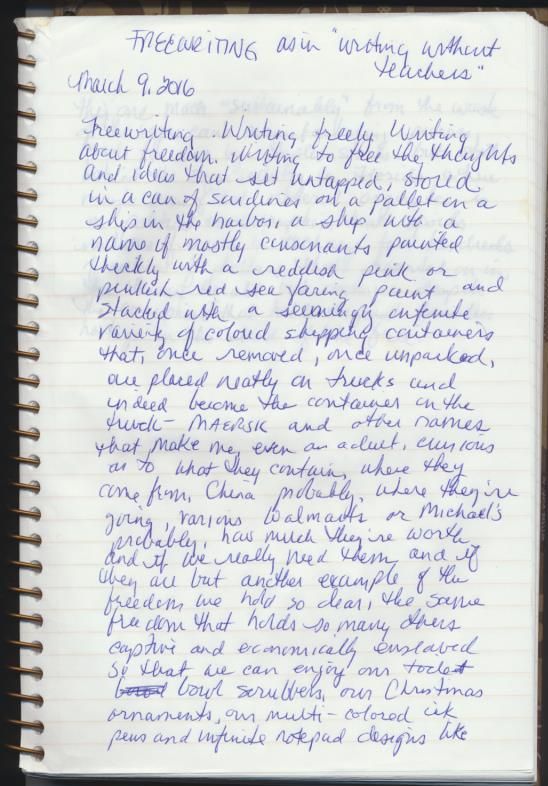

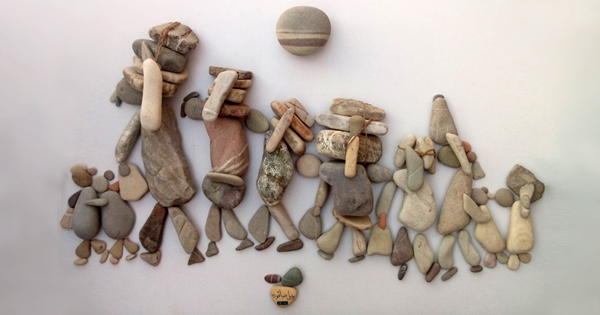 I learned about this work from a Twitter post #Pebbles – a story of refugees in stones by Syrian artist Nizar Ali Badr.
I learned about this work from a Twitter post #Pebbles – a story of refugees in stones by Syrian artist Nizar Ali Badr.
What gorgeous work from sculptor Nizar Ali Badr. If you have problems reading French, please visit the link at the bottom of this blog post and copy and paste into translate.google.com and look at all the photos of some of his sculpture work while you’re there. It’s beautiful.
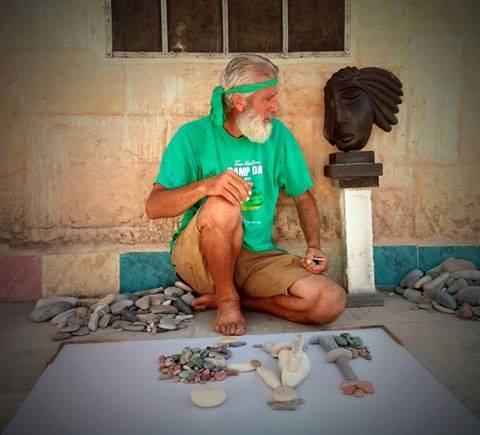 Le sculpteur syrien Nizar Ali Badr est un homme discret. Les mots ne sont pas son truc. Lui c’est les pierres.
Le sculpteur syrien Nizar Ali Badr est un homme discret. Les mots ne sont pas son truc. Lui c’est les pierres.
Je ne sais rien de lui, ni d’où il vient exactement, ni où il est juste maintenant. Je trouve sa trace sur deux, trois sites turcs. Emus par ses compositions sur les réfugiés syriens, ils présentent Nizar Ali comme « migrant ».
Sur son Facebook je vois qu’il habite à Lattaquié en Syrie. Y est-il encore? Sinon, où a-t-il atterri ? J’aurais voulu tellement en savoir plus. Je ne parle pas l’arabe. J’essaye alors désespérément de déchiffrer ses rares mots en traduisant avec des outils médiocres. Malgré l’approximation des traductions, je ressens la sagesse, la simplicité, une immense amour pour l’humanité, et l’espoir. Ces mots rejoignent totalement la poésie qui découle de singulières pierres, touchées par les mains d’artiste.
Source: Les pierres de l’artiste syrien Nizar Ali Badr | KEDISTAN
It’s the birthday of the Nobel Prize-winning novelist who said, “I’ve always been convinced that my true profession is that of journalist.” That’s Gabriel García Márquez, born in Aracataca, Colombia, on this day in 1927. He’s the author of one of the most important books in Latin American literature, One Hundred Years of Solitude (1967).
He once said: “I learned a lot from James Joyce and Erskine Caldwell and of course from Hemingway … [but the] tricks you need to transform something which appears fantastic, unbelievable into something plausible, credible, those I learned from journalism. The key is to tell it straight. It is done by reporters and by country folk.’’
For more on Marquez and others : The Writer’s Almanac with Garrison Keillor
It’s the birthday of the novelist Khaled Hosseini (books by this author), born in Kabul, Afghanistan (1965).
Khaled Hosseini said: “There is a romantic notion to writing a novel, especially when you are starting it. You are embarking on this incredibly exciting journey, and you’re going to write your first novel, you’re going to write a book. Until you’re about 50 pages into it, and that romance wears off, and then you’re left with a very stark reality of having to write the rest of this thing […] A lot of 50-page unfinished novels are sitting in a lot of drawers across this country. Well, what it takes at that point is discipline […] You have to be more stubborn than the manuscript, and you have to punch in and punch out every day, regardless of whether it’s going well, regardless of whether it’s going badly […] It’s largely an act of perseverance […] The story really wants to defeat you, and you just have to be more mulish than the story.”
Today is the birthday of three of my favorite writers: Writer and illustrator Dr. Seuss (born Theodor Seuss Geisel) , writer John Irving, and 20th century writer and cultural anthropologist Tom Wolfe.
In the fall of 1936, Geisel was coming home from Europe, stuck below deck during a long rainy stretch. He started making up words to fit the rhythm of the ship’s engine, and the poem he composed in his head became his first children’s book: And to Think That I Saw It on Mulberry Street (1937). His manuscript was rejected more than 20 times; editors disliked the fantasy, the exuberant language, and the lack of clear morals. One day, after receiving yet another rejection, he finally decided to give up and burn his manuscript. He was thinking about this as he walked down Madison Avenue in New York, when he bumped into an old classmate from Dartmouth, who had recently become a children’s book editor for Vanguard Press. After hearing his story, the classmate took Geisel back to his office and introduced him to some executives, and it wasn’t long before he had a book deal. He said later: “If I had been walking down the other side of Madison Avenue, I’d be in the dry-cleaning business today.”
John Irving keeps a practiced routine when he writes. He sits at an L-shaped desk surrounded by notepads and notebooks and writes his books by hand before typing them. “I have lots of notebooks around, because one great advantage of writing by hand — in addition to how much it slows you down — is that it makes me write at the speed that I feel I should be composing, rather than faster than I can think, which is what happens to me on any keyboard.”
Irving’s most recent book is Avenue of Mysteries (2015).
He said, “If you can see things out of whack, then you can see how things can be in whack.”
And while Wolfe had a Ph.D. he decided to be a newspaper reporter. Then, in the early 1960s, there was a newspaper strike in New York City, and the paper he worked for was affected. He was out of a job for a while, and he decided to pitch an idea to Esquire magazine for a story about the hot-rod car culture around Southern California.
The editor agreed, and Wolfe went out to L.A., hung around car shows, drag races, and demolition derbies, and ran up a $750 bill at a Beverly Hills hotel. He’d taken lots and lots of notes, but he couldn’t figure out what the story should be or how to write it up — not even by the night before his magazine deadline. The editor told him to type up his notes, send them, and he’d go ahead and put together the story. Wolfe sat at his typewriter and banged out a letter to his editor with his ideas and observations. His editor liked it so much that he just removed the salutation (“Dear Byron”) at the top and published Wolfe’s notes as a feature article. The story was a huge hit and became the title piece in Wolfe’s first published book, The Kandy-Kolored Tangerine-Flake Streamline Baby (1965).
Read a lot more about these writers here: at The Writer’s Almanac with Garrison Keillor
In the second part of her special on the Syrian refugee crisis, the “Full Frontal” host Samantha Bee teaches refugees what they need to know about the United States.
For more visit TruthDig
 A good use of technology has arrived!
A good use of technology has arrived!
A satellite-based alert system could prove a potent weapon in the fight against deforestation. As few as eight hours after it detects that trees are being cut down, the system will send out e-mails warning that an area is endangered. That rapid response could enable environmental managers to catch illegal loggers before they damage large swathes of forest.
Source: Satellite alerts track deforestation in real time : Nature News & Comment
 Arnold Weinstein, a professor of comparative literature at Brown University, and the author, most recently, of “Morning, Noon and Night: Finding the Meaning of Life’s Stages,” writes in The New York Times that “our data-driven culture bears much of the blame for the decline of the humanities in higher education.”
Arnold Weinstein, a professor of comparative literature at Brown University, and the author, most recently, of “Morning, Noon and Night: Finding the Meaning of Life’s Stages,” writes in The New York Times that “our data-driven culture bears much of the blame for the decline of the humanities in higher education.”
But it’s not just in higher education where the humanities are declining because of the data-driven culture, or electronics-driven culture, or computer-driven culture, or Facebook-culture, and, in general, the soon-to-be-the-revived Beat culture, because we’re all tired of all the information, all the data, the games (video), the Facebooking, and the separating-ness of computers in general.
Humanities are declining in our minds and in our hearts, where the humanities once originated. The arts are atrophying in today’s society, particularly in Western countries where computers are ubiquitous. If it’s not a computer in someone’s hand, then it’s a smart phone, which can do more than a personal computer could do in the mid-1980s, which might sound to some like the stone age, but, it was only 30 years ago and we were carrying our data around on floppy disks and, soon, 3.5″ floppy disks.
If you find yourself spending a couple to a few hours a day on your personal computer, not including the time you spend on it doing just things for your job, and that you still have a hard time carving out time for your family, for your exercise, for reading, or enjoying things like art and nature, then it is happening to you.
There is so much we want to do. There are so many things we could do. This is proven everyday millions and millions and millions of times, when so many distractions keep so many people from doing what they really want to do.
The important thing to do is

It’s easy. It sounds easy and it IS easy. You might have to ask yourself what you enjoy more, watching videos on YouTube, or visiting the Museum of Modern Art and looking at the expanse of Matisse’s Dance painting in person. If you’ve never seen it and can get to the museum, I urge you to go. It’s nothing like you see when you look at it on a computer.
Source: Don’t Turn Away From the Art of Life | The New York Times
Proudly powered by WordPress | Theme: Baskerville 2 by Anders Noren.